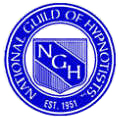Hypnosis has been a recognized therapeutic tool for the treatment of the human mind for hundreds of years.
However, at one point in time, hypnotists were often considered to be sorcerers and seers. Some very well meaning, pioneers of hypnotherapy well scrutinized, shunned, and even occasionally imprisoned because of their practice of interacting with the subconscious minds of their clients/patients. A lot has changed over the years, and now professional Hypnotherapy is a much more recognized therapeutic modality and profession. The training required involves a licensed school of Hypnotherapy, and involves multiple levels of training such as basic, intermediate, and advanced levels of education and certification. Most professional Hypnotherapists are trained and certified at the advanced level of practice. Advanced training requires hundreds of hours of classroom time, many hours and sessions of internships, and frequent testing. Only those persons who successfully pass all training, testing, and internships will be certified. Continuing education hours are required each year in order to renew the certification.
 The National Guild of Hypnotists is the oldest organized regulating and certifying body. Their organization dates back to the early 1950’s. There is also the International Medical and Dental Hypnotherapy Association, which is also very reputable, and generally require the same professional standards for credentialing as does the National Guild of Hypnotists.
The National Guild of Hypnotists is the oldest organized regulating and certifying body. Their organization dates back to the early 1950’s. There is also the International Medical and Dental Hypnotherapy Association, which is also very reputable, and generally require the same professional standards for credentialing as does the National Guild of Hypnotists.
A brief overview of hypnosis: The conscious mind is the state of our mind when we are fully awake. This is termed the beta brain wave activity. The point of achieving successful hypnotherapy is to suppress the conscious mind to a level of consciousness that allows the subconscious mind to become much more alert and attentive. For instance, the measured activity of the brain is termed as beta: wide awake; alpha: drowsy, slightly sleepy, comfortable; theta: which is the desired level of consciousness for therapeutic hypnotherapy which involves significant sleepiness, day-dreaming, a “drifting” of thoughts, and broken thought patterns. At this point of the theta level, the subconscious mind becomes 300 times more susceptible to positive suggestions. 300 times! Finally, the delta level, which involves deep sleep, however the subconscious mind is still very alert, attentive, and responsive at this point.
Once the client has been gently and slowly relaxed in order to slow and lengthen the brain waves representing electrical activity, then the professional Hypnotherapist makes direct and positive suggestions to the client. This could be called the “meat” of the session, the time that the subconscious mind is communicated with and programmed with positive suggestions and ideas. It is important that all clients be gently and fully returned to full consciousness prior to the termination of their session. They are often quite drowsy, tired, peaceful, and express memory loss of the actual session.
Modern day professional Hypnotherapy has proven time and again to be a very legitimate and therapeutic psychological tool. Smoking cessation, weight loss, confidence building, anxiety and PTSD disorders, insomnia, sustained grief, academic enhancement, sports enhancement, and sexual enhancement are but a sample of the many conditions which are often successfully treated with professional Hypnotherapy. For the client, the overall hypnosis experience, if properly performed, is one of gentle peace and positive feelings. It is an absolute that any and all professional Hypnotherapy sessions be grounded in positive suggestions. It is true that the human mind must be treated carefully and with the utmost respect.
Typically, during a hypnotherapy session, the Hypnotist will play background music, instrumental only, which is actually played at the timing of 60 beats per minute. As some of us may already know, 60 beats per minute is considered the normal heart rate per minute of the average human adult. A comfortable chair or couch is used. A quiet environment is very important. Candles and incense may add additional external sensory stimulation. Some clients require only one intense session, while others may require multiple sessions. Clients seeking weight loss treatment typically require numerous sessions. Sometimes 4 to 10 sessions may be required in order for the client to reach their goal(s). Typically, all professional Hypnotherapy sessions are audio recorded. A copy of this tape or CD is given to the client to take home with them, and they are instructed to listen to the recording every day (or night) for at least two full weeks. This is a very important “reinforcement” tool that highly recommended.
I have enjoyed writing about hypnosis and hypnotherapy. In the near future, I would like to dwell deeper into the depths of and diversity of hypnotherapy. I would particularly like to discuss past life regressions. By this, I mean guiding a client, while under hypnosis, back to an earlier time in their life. There is also previous life regression, for many persons who believe that they have lived before in another life.
For now, may peace be with you, and may your thoughts be positive and kind. My word for the day: All Actions Begin With a Thought . . .
Yours Truly,
Will Gilbreath, BS,Cht,RN,LP
Disclaimer:
Hypnotherapy services are not a replacement for psychological evaluation or treatment. Any continuing mental illness after hypnosis by a clinical hypnotherapist should be treated by a psychologist licensed by the State Of Texas